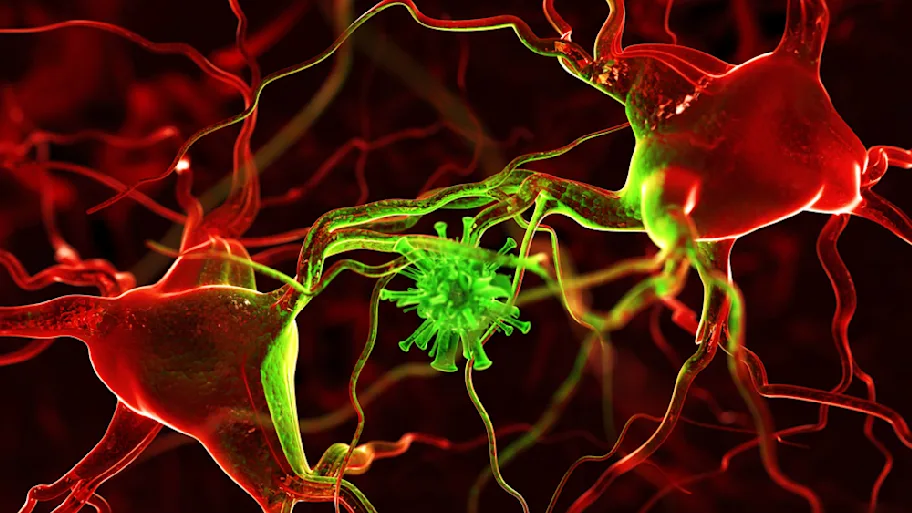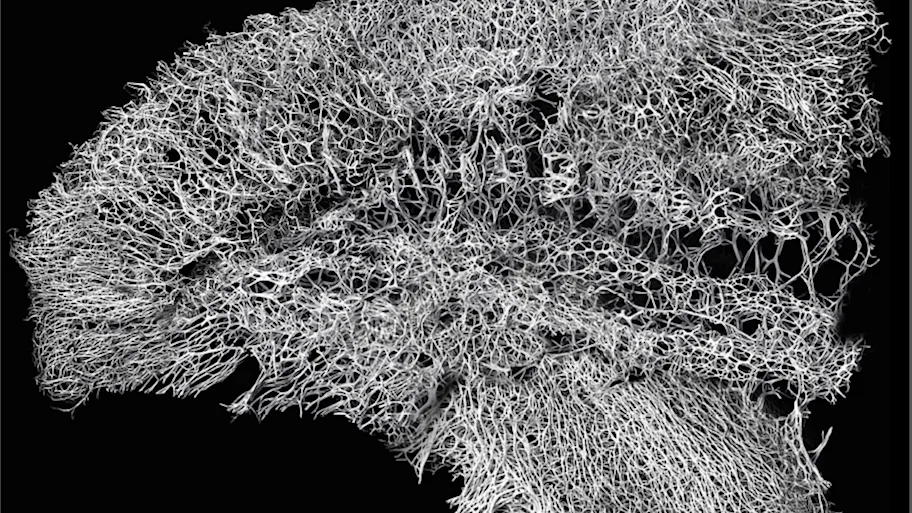
- Science News
- Neuroscience
- Pushing the Frontiers of Synaptic Neuroscience – an interview
Pushing the Frontiers of Synaptic Neuroscience – an interview

Transmission electron microscope micrograph showing two synapses with clear synaptic vesicles. Image by Shutterstock.
In this interview with the Specialty Chief Editor of Frontiers in Synaptic Neuroscience, Dr Jesper Sjöström tells us about his aspirations for Frontiers in Synaptic Neuroscience and his vision for the field.
Please introduce yourself and your research.
I am an Associate Professor in Neuroscience in the Brain Repair and Integrative Neuroscience (BRaIN) program at the Research Institute of the McGill University Health Centre in Montreal, Canada. My team of researchers aims to understand how individual cells in the brain store information as we learn and acquire new information. Neurons in the brain do this by modifying their connections to and from neighbouring cells in a process known as synaptic plasticity.
One focus of our research is a form of cellular learning known as Spike-Timing-Dependent Plasticity (STDP). With STDP, synaptic connections change strength depending on the precise millisecond timing order of spiking activity in connected cells, which may enable neurons to carry out so-called predictive coding so that associative links of causal relationships in the outside world can be learned. For instance, if I told you repeatedly that the stock market will go up tomorrow and it always did go up, you would listen more and more carefully to my predictions, even though you don’t know how I do this trick. Conversely, if my predictions were wrong every time, you would listen less and less to them. The idea is that STDP allows neurons to store information like this, by rewarding synaptic inputs that repeatedly predict their own spiking activity while punishing those that do not.
My lab also explores what happens when cellular learning goes awry. One example of this is epilepsy, a devastating disease in which mechanisms that are normally involved in learning and memory are pathologically recruited, producing self-amplifying patterns of activity. This eventually leads to “electrical storms” in the brain — seizures — that are extremely debilitating. Epilepsy is the fourth most common neurological disorder: about 5 million people in the US alone have been diagnosed with epilepsy. Yet unfortunately, a third of patients are resistant to drug treatment. Furthermore, all of today’s current epilepsy drugs only treat the symptoms of the disease once it has already firmly taken root, rather than treating the growth and establishment of the disease. We aim to change this.
Why did you choose this area of research? Why are you passionate about this Topic?
I took a course in artificial neural networks during my undergraduate studies at Uppsala University, back home in Sweden, that made me start thinking about synaptic connections. I knew before the course how to program a computer to do something useful. But I was puzzled by how you could do anything useful with a bunch of neurons that are hooked up to each other. That course taught me how a network of neurons could be “programmed” to do stuff, and ever since then I’ve been hooked on understanding how the actual brain does things, at the level of cells and networks.
Why did you join Frontiers in Neuroscience as a Specialty Chief Editor?
Novel ways of going about things always interest me.
I am a bit of an idealist, so the notions that scientific results should be free to all readers and possible to publish at a minimal cost to the researcher really appealed to me.
I wanted to help promote that development, and I thought Frontiers had an intriguing way of going about Open Access publishing. I like the grass-roots approach to evaluating which research papers are important, by basing it on evidence, or readership. The bottom-up manner in which Research Topics and eBooks are created is great for encouraging new ideas to flourish.
What are your aspirations for the “Synaptic Neuroscience” section?
Synaptic neuroscience is not an as well-defined research field as systems or cellular neuroscience are, but I think it should become one.
For example, it is increasingly clear that many diseases of the brain such as epilepsy, Alzheimer’s, and schizophrenia are actually diseases of the synapse, so there is an opportunity for the Frontiers in Synaptic Neuroscience section to bridge a gap between basic and applied science. I want us to continue to grow our foundation of authors, publish hot Research Topics, and establish an impact factor for our specialty section. Although I personally prefer the novel and more detailed publication metrics that Frontiers employs, impact factor is still an important metric for many researchers and institutions.
Based on your experience to date, how is being an Editor for Frontiers different than other journals?
It is dynamic and interesting. It is not as much work as one might think, and the work is not particularly burdensome. The system is based on automating the peer review and publication procedures, which removes a big burden from the editors. The editorial office is also tremendously supportive, and is always interested in changing and improving the system. Taken together, these enable me to focus on the more interesting aspects of publishing.
What’s your vision for the field for the next years?
Synaptic diseases are important, and we hope to grow in this field. However, we are committed to supporting primary Synaptic Neuroscience research, since this is critical for understanding the brain. For example, to create realistic computer models of the central nervous system so that we can simulate and understand specific brain functions, we must study in detail the different synapse types of the brain, because synaptic properties vary tremendously with brain region and cell type. Neuroscientists have known for some time that there is a plethora of different cell types, but I think it is only recently that researchers have come to appreciate fully the multiplicity of synapse types that arises from this vast diversity of cell types. All these cell types are interconnected with an even larger number of synapse types, so just do the math and you realize the massive amount of work that lies ahead!
What are the 5 big challenges for synaptic neuroscience in the next years?
I have already mentioned two big challenges in the field: (1) synaptic disease and (2) synapse-type-specific plasticity. These are huge challenges that will require tremendous effort, and I am excited to see these topics being addressed, and published in our journal.
Another key question that we face is (3) understanding the biological relevance of the various forms of synaptic plasticity that have been found in vitro. How do we translate our understanding of synapses from the dish to the brain? We need to explore in greater detail precisely how synaptic plasticity underlies learning and memory in the brain. For example, STDP depends critically on postsynaptic spiking output. Another view, however, is that synaptic plasticity is triggered by local dendritic spikes that do not evoke spiking output. The question of whether spiking output is necessary and sufficient for synaptic plasticity can ultimately not be answered in vitro, in a dish, but must be investigated in vivo, in the intact brain during actual learning. My bet is that both camps are going to be right, but under different circumstances.
It is also becoming clear that the rules that govern the plasticity of existing synaptic connections are not the same as those governing the formation and elimination of synaptic connections, which is known as structural plasticity. (4) Our understanding of synaptic plasticity at the structural level is lacking, and although challenging, is likely to be critically important. (5) Finally, the involvement of glial cells in synaptic plasticity needs to be understood in much more detail. This concept of the tripartite synapse — pre- and post-synaptic elements and neighboring glia — is a hot topic, and will likely remain so for years to come.
To sum up, I think we will see a big shift away from a limited number of dearly held canons toward a much more detailed, diverse, and nuanced view. This richer picture of the synapse will be important for our collective understanding of the brain in health as well as in disease.







